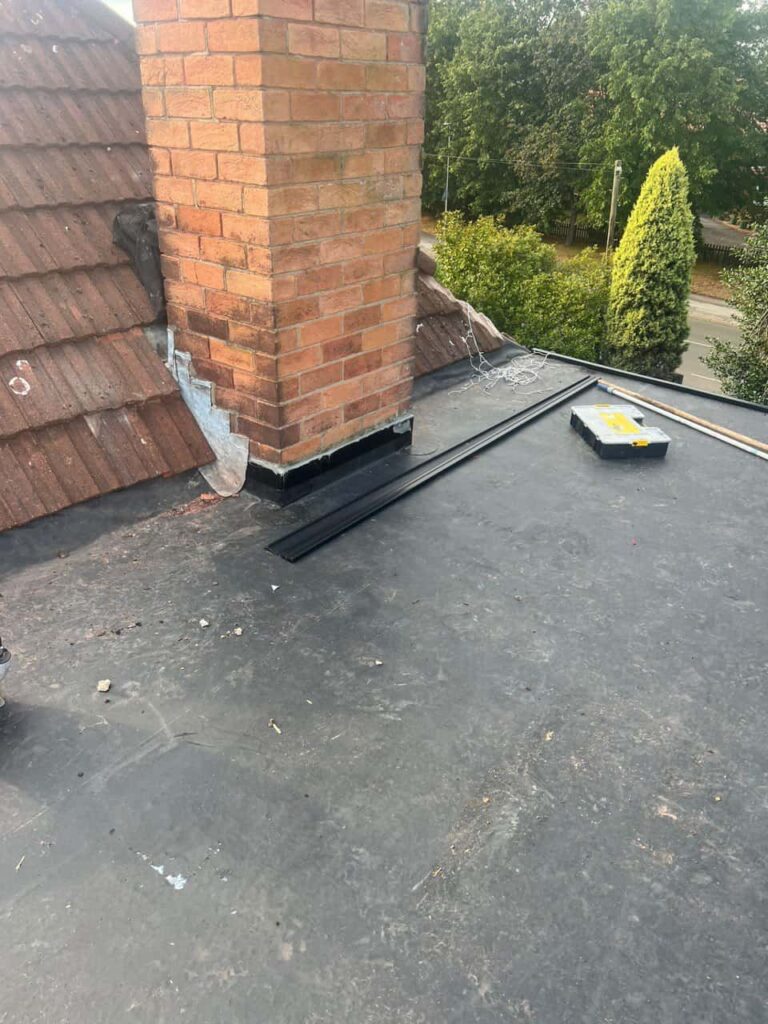Introduction: When it comes to re-roofing your home with a hipped roof, ensuring proper ventilation is essential for maintaining indoor comfort, preventing moisture buildup, and prolonging the lifespan of your roof. Hipped roofs present unique challenges when it comes to ventilation due to their sloping design and multiple planes. At Calverton Roofing Repairs, we understand the importance of effective roof ventilation and provide guidance on handling ventilation systems during hipped roof re-roofing projects. In this blog post, we’ll explore the importance of roof ventilation, common ventilation systems for hipped roofs, and best practices for managing ventilation during re-roofing.
Why Roof Ventilation Matters
Proper roof ventilation is critical for maintaining a healthy and functional roofing system. Without adequate ventilation, heat and moisture can become trapped in the attic or loft space, leading to various issues such as mould growth, wood rot, and premature deterioration of roofing materials. Additionally, poor ventilation can result in higher energy costs as hot air becomes trapped in the attic, forcing your HVAC system to work harder to maintain comfortable indoor temperatures.
Common Ventilation Systems for Hipped Roofs
There are several ventilation systems commonly used in hipped roof structures to ensure effective airflow and temperature regulation:
- Ridge Ventilation: Ridge vents are installed along the roof’s peak, allowing warm air to escape from the attic while drawing in cool air through soffit vents or other intake vents along the eaves.
- Soffit Vents: Soffit vents are installed underneath the roof’s eaves and provide intake ventilation, allowing fresh air to enter the attic space and push hot air out through ridge vents or other exhaust vents.
- Box Vents: Box vents, or static vents or roof louvres, are installed on the roof surface and provide passive exhaust ventilation for the attic space. They work by allowing hot air to escape through the vent openings.
- Gable Vents: Gable vents are installed in the gable ends of hipped roofs and provide exhaust ventilation for the attic space. They work with soffit vents or other intake vents to promote airflow throughout the attic.
Managing Ventilation During Re-Roofing
When re-roofing a hipped roof, it’s essential to carefully manage the existing ventilation system to ensure that airflow is maintained and the new roofing materials are installed correctly. Here are some tips for managing ventilation during re-roofing:
- Inspect Existing Ventilation: Before starting the re-roofing project, inspect the existing ventilation system to assess its condition and identify any issues that may need to be addressed. Ensure that intake and exhaust vents are clear of debris and obstructions.
- Protect Ventilation Openings: During the re-roofing process, protect existing ventilation openings such as ridge vents, soffit vents, and gable vents from damage or obstruction. Use temporary covers or barriers to prevent debris from entering the attic space.
- Integrate New Ventilation: If necessary, consider integrating new ventilation components into the re-roofing project to improve airflow and address any deficiencies in the existing ventilation system. Work with your roofing contractor to determine the best placement and type of ventilation for your hipped roof.
- Ensure Proper Installation: When installing new roofing materials, ensure that ventilation openings are properly aligned and that flashing and other components are installed correctly to prevent leaks and maintain airflow. Follow manufacturer guidelines and industry best practices to ensure a quality installation.
- Inspect and Maintain: After the re-roofing project is complete, thoroughly inspect the ventilation system to ensure it functions correctly. Schedule regular maintenance and inspections to keep the ventilation system in optimal condition and address any issues promptly.
Conclusion: Proper ventilation is essential for maintaining the health and longevity of your hipped roof and ensuring comfortable indoor conditions year-round. By understanding the importance of roof ventilation, choosing the right ventilation systems for your hipped roof, and effectively managing ventilation during re-roofing projects, you can enjoy a well-ventilated and functional roofing system for years.
Call us on: 0115 647 1193
Click here to find out more about Calverton Roofing Repairs
Click here to complete our contact form and see how we can help with your roofing needs.

